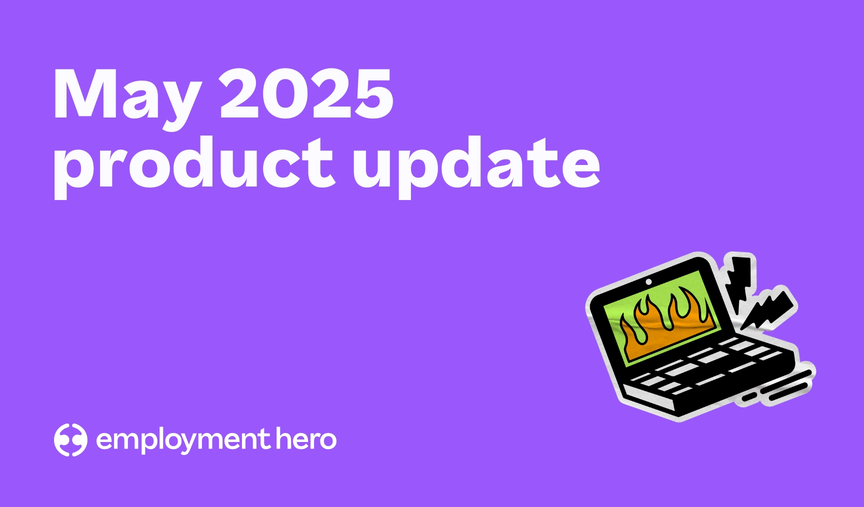How Anonymous Employee Feedback Can Help Your Business Grow
Are you tired of hearing only positive feedback at work? Anonymous feedback could be the tool for you.

An anonymous feedback form for employees template can help reveal more honest and useful opinions from your team, helping your business to evolve and thrive.
Take a look at our guide and get started with our downloadable anonymous employee feedback template.
What is anonymous employee feedback?
Anonymous employee feedback is a process in which employees are given the opportunity to share their thoughts and opinions on their workplace without having to reveal their identity.
This type of feedback is usually collected through surveys, questionnaires, or other channels that allow employees to share their thoughts without identifying themselves.
Anonymous employee feedback is a powerful tool, but why does it matter?
The purpose is to create a safe and non-confrontational environment for your team to express their thoughts and concerns without the worry of negative consequences. Feedback given like this can provide valuable insights for business owners and HR managers to improve the workplace and address any issues that may exist.
Other opportunities for employees to share how they’re feeling or raise any issues may only involve talking to their managers during regular 1-2-1s. But this can bring the fear of repercussions. While it may only be a fear rather than a reality, it’s enough to hold many team members back from speaking up about genuine concerns.
Anonymous feedback helps to remove this barrier, encouraging everyone to provide their honest views without the fear of being treated differently as a consequence.
Why is anonymous employee feedback important for businesses?
Encourages honesty and transparency
When employees feel that they can share their opinions without having to put their name to it, they are more likely to be honest and transparent. This can lead to more accurate and useful information for business owners or HR managers to look into.
Reduces fear of retaliation
Team members are often hesitant to provide feedback if they’re worried about potential negative consequences. Anonymous feedback can eliminate this fear and encourage employees to be more forthcoming with their opinions.
Identifies issues early
Anonymous feedback can help identify issues or problems that may be going unnoticed or unaddressed. To make positive changes, business leaders and HR managers first need to know what’s going on. And the reality is, problems aren’t always obvious or apparent. So the only way to find out is by asking your team.
Promotes fairness and equality
Anonymous feedback can also help promote fairness and equality in the workplace by ensuring that everyone’s opinions and feedback are considered equally, regardless of their position or seniority.
Increases employee engagement
When your team feels heard and valued, they are more likely to be engaged and invested in the wider business. Asking for their opinion on their environment can help increase employee engagement by giving them another opportunity to voice their point of view.
What are some areas of work in which anonymity should not be used?
While anonymous feedback form for employees template can be a useful tool, there are some areas in which anonymity should not be used, such as:
- Personal performance feedback – when providing feedback on an individual’s performance, it is important to be transparent and specific. Anonymous feedback can be vague or general, making it difficult for employees to understand what they need to do to improve.
- Employee discipline – when an employee is being disciplined for misconduct, it’s important for them to know who is holding them accountable. Anonymous feedback in such cases can be seen as unfair and potentially lead to legal issues.
- Team-building – anonymous feedback should not be used in team-building activities as it can hinder trust and transparency between team members.
- Conflict resolution – when resolving conflicts between employees, all parties involved need to be transparent about their concerns and opinions.
How to Collect Anonymous Employee Feedback
The best way to collect anonymous feedback at work depends on the specific circumstances, and the type of feedback you’re looking for. That being said, we’ve got some general tips for gathering it.
1. Use a third-party tool
Using a third-party tool, such as a survey software or an Employment Operating system that supports anonymous feedback, can help ensure that employee feedback remains confidential and is handled professionally.
2. Communicate clearly
When collecting anonymous feedback, it is important to communicate clearly with employees about the purpose of the feedback, how it will be collected, and how it will be used. This can help increase employee trust and participation.
3. Keep it simple
Keep the questions clear, concise, and relevant. Avoid using leading questions or making assumptions about what employees are thinking.
4. Allow for open-ended responses
In addition to multiple-choice questions, allow for open-ended responses so employees can provide more specific and detailed feedback and suggestions.
5. Be consistent
To ensure fairness, it is important to collect and act on feedback consistently and regularly, rather than only when there is a problem or issue.
Questions to Ask in an Anonymous Employee Feedback Survey
Wondering what you should be asking in your anonymous employee feedback questions?
We’ve got some general questions to get you started:
- On a scale of 1-10, how satisfied are you with your role in the business?
- Do you feel adequately supported in your daily work life?
- Do you feel aligned with the business’s ethos and values?
- Do you feel you have been given the necessary tools and resources to perform your role effectively?
- What areas of the business do you feel need improving?
- Do you feel valued for the job you do?
- What do you like most about working for the business?
Although some questions might be universal, we recommend you tailor your questions to different situations or team members, such as asking new hires about the onboarding process, asking about training or career progression, or doing exit interviews with leavers. Think about your goals when setting questions, focusing on what you want to improve or work on in your business.
How often should you collect feedback?
One mistake with anonymous feedback is to overload your employees with questionnaires. Getting your team’s opinion can be valuable, but its value is reduced if your employees just don’t have the time or inclination to engage with it.
People will quickly start to get fed up with constant requests for feedback. So our best advice is to make sure you focus on quality rather than quantity, and put thought into valuable surveys rather than lots of surveys.
Open-ended vs. multiple-choice vs closed questions
When deciding on what you want to ask, think about the type of information you want to gather, and how you’ll use it.
Asking multiple-choice questions will give you easily quantifiable answers, while asking open-ended questions will give you a much wider range of possible answers and detail.
How to Use Anonymous Feedback to Drive Business Growth
It’s vital to have a plan for making effective use of your anonymous employee survey feedback once you get it. Here’s our best advice:
Analysing employee feedback effectively
The first step is to thoroughly analyse the feedback you get, whether that’s turning multiple-choice responses into clear statistics or going through open responses to spot themes or common concerns.
Turning feedback into actionable change
Once you have the information, it’s time to see how and where you can make positive changes in your business.
Create a plan to prioritise actions, from immediate changes to things that might take more time and effort to put into place. Prioritise what will have the most impact while still being feasible.
Share feedback with relevant teams
Feedback should always be communicated to the relevant stakeholders, whether that’s managers, leadership, or HR. This should include positive and negative feedback that can be used to improve systems and strengthen workplace culture.
Communicating changes to employees
It’s important to signal the changes as well as put them into action. Employees will appreciate actions taken in response to their feedback, reinforcing the importance of the anonymous feedback system you’ve put in place.
Best anonymous feedback tools to improve your feedback process
Employee happiness and engagement surveys
Happy employees are engaged employees, and for most organisations, a happiness survey is the first step in engaging with their team. Measuring, actioning and closing the loop on the survey data will show your team that management listens to and values their input.
Online suggestion box
An online suggestion box is a digital platform that allows individuals to submit feedback, ideas, or suggestions to an organisation or group.
The platform can be a web application, a mobile app, or a simple web form. It’s an easy and convenient way for individuals to share their feedback and ideas, helping to foster communication and engagement between employees and leaders.
Connecteam is one example of an award-winning suggestion box software solution with lots of handy features which bring employees into the decision-making process.
AI chatbots
AI chatbots can also be used for gathering feedback, anonymously or not. Chatbots can be designed to ask specific questions and collect feedback from users in a conversational way. This type of feedback collection can be automated, which can save businesses heaps of time and resources.
AI chatbots can be programmed to ask follow-up questions based on the user’s responses, allowing for more detailed feedback to be collected. They can also be trained to recognise certain keywords or phrases that may indicate a user’s sentiment, such as positive or negative feedback.
And there’s more, AI chatbots can be designed to provide personalised responses to users, based on the feedback they provide. For example, if a user provides negative feedback about a product, the chatbot can provide a tailored response to address their concerns and offer solutions or next steps.
Employee feedback platforms
Employee feedback platforms are digital tools or software that enable businesses to collect, analyse, and act on feedback from their employees. These platforms may include features such as surveys, pulse polls, suggestion boxes, and even performance reviews. Typically, these platforms also include tools for analysing and reporting on the feedback collected, enabling businesses to identify trends, track progress over time, and make data-driven decisions.
Leapsome is a leading employee feedback platform. It’s designed to facilitate a culture of rapid development and learning by giving continuous anonymous feedback and sharing praise with anyone in the organisation. It also includes a library of best practices and resources, so that employees can continue to develop their skills and knowledge.
Anonymous eNPS (Employee Net Promoter Score)
Anonymous eNPS (Employee Net Promoter Score) is a way of measuring employee satisfaction and loyalty towards a business or organisation. It is a variation of the Net Promoter Score (NPS) which is a widely-used metric for measuring customer satisfaction and loyalty.
The eNPS survey is like an ‘internal Glassdoor’ and measures the likelihood of employees recommending their company as a place to work, using a scale of 0 to 10. Employees are then grouped into three categories:
- Promoters (score of 9-10) who are highly satisfied and likely to recommend the company to others.
- Passives (score of 7-8) who are satisfied but not as likely to recommend the company.
- Detractors (score of 0-6) who are not satisfied and unlikely to recommend the company.
An advantage of using the Anonymous eNPS survey is that it allows employees to provide feedback anonymously, which may encourage more honest and open responses. It also provides a simple and easy-to-understand metric for measuring employee satisfaction and loyalty, which can help businesses identify areas for improvement and track progress over time.
What should managers do if they receive bad feedback from employees?
Receiving negative feedback can be disappointing. But it’s a great opportunity for managers to improve their leadership skills and build stronger relationships with their team. By taking responsibility, developing an action plan, and following up, managers can demonstrate their commitment to creating a positive work environment and fostering employee engagement.
Get feedback with Employment Hero
Looking to gather employee feedback? Employment Hero’s Employee Engagement Software has you covered.
Gauge how your teams are doing with our anonymous survey tools, reward and celebrate success, and bring a host of benefits to your employees with one platform.
Create custom anonymous surveys that provide a safe and secure way for your employees to express their opinions, giving you valuable feedback to implement effective change. Refine policies, onboarding, company culture, communication, leadership and more, helping you to take your business forward into a successful future.
But that’s not all we do. Our Employment Operating System takes the traditional isolated aspects of employment and integrates them into a seamless, human and AI-powered solution that empowers employers, employees and job seekers alike. Find and hire top talent, with SmartMatch, seamlessly onboard new hires, automate complex payroll, drive employee engagement and more.
Talk to our team and request a demo today.
Related Resources
-
 Read more: Product Update: May 2025
Read more: Product Update: May 2025Product Update: May 2025
Follow our May 2025 product update as we share all of the latest and greatest features we’ve released over the…
-
 Read more: The Construction Industry Scheme (CIS): A Guide For Employers
Read more: The Construction Industry Scheme (CIS): A Guide For EmployersThe Construction Industry Scheme (CIS): A Guide For Employers
Discover our Construction Industry Scheme guide. Whether you’re a business owner or HR professional, understanding CIS is key for compliance…
-
 Read more: Dealing with mental health in business—From a HR professional
Read more: Dealing with mental health in business—From a HR professionalDealing with mental health in business—From a HR professional
Discover our in-depth guide to mental health sick leave. We look at what it is, why it is taken and…












